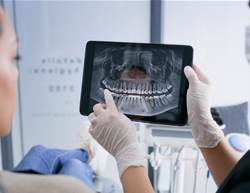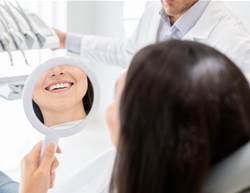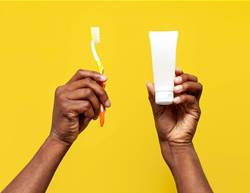If you diligently brush your teeth the recommended two or more times per day, you’ll likely skip out of the dentist’s office cavity-free. But, unfortunately, your pearly whites might be sparkling at a cost to both you and the environment. Many of the big-brand toothpastes lining suoermarket shelves contain some nasty and potentially harmful ingredients. We’re not saying you should stop brushing your teeth or give up on toothpaste—but you should start reading the labels. Memorise these four ingredients, and keep them out of your medicine cabinet for worry-free brushing.
Triclosan
Triclosan is an antiseptic additive that’s sometimes used in toothpaste to help prevent gingivitis (it shows up in most antibacterial soaps, too). The anti-triclosan case has been growing steadily. For one thing, it’s almost certainly an endocrine disruptor, similar to BPA. But that’s just the tip of the iceberg—the widespread usage of triclosan may actually be contributing to bacterial resistance to antibiotics. There’s also a 2014 study that found a link between triclosan and liver fibrosis and cancer in mice. Plus, a new study suggests the additive could cause people to develop allergies to certain foods, especially peanuts. Think twice before you buy and give a triclosan-free alternative, such as Grants toothpaste, a try instead.
Microbeads
We’ve seen these tiny plastic beads in body washes, but now microbeads are also showing up in toothpaste, and they can be even smaller than you might think. Less than a millimetre thick, they’re added to some toothpastes for superior scrubbing power. The good news is that they’re nontoxic and will pass right through you. The problem occurs when they enter the water system (they’re too tiny to be sequestered by wastewater treatment plants). There they bind with toxins like pesticide chemicals and are ingested by fish and other marine life, which are in turn eaten by animals higher up the food chain, like us. Luckily, a ban for these products has just come into place but make sure you check labels for polyethylene (PE) and polystyrene (PS), and steer clear.
FD&C Blue 1
There’s no way that cool aqua hue occurs naturally in toothpaste. FD&C Blue 1 is a synthetic dye produced from petroleum, which can accumulate in the body over time. Scientists aren’t sure what risks this particular colourant poses, but food dyes in general are potentially linked to allergies, ADHD and cancer, according to the Center for Science in the Public Interest, a nonprofit watchdog group that put together a comprehensive report of all the available scientific research on food colourings. They found that the data on Blue 1 was especially thin and much of what was available was industry-commissioned (go figure). The takeaway? You don’t really need colour to clean your chompers.
Sodium Lauryl Sulfate (SLS)
Ah, SLS, the most notorious of toothpaste ingredients. So what’s it doing in our toothpaste in the first place? It’s a foaming agent you’ll even see in shampoos, unless you’re using a homemade shampoo. But beyond making our mouths sudsy, it doesn’t serve much purpose. Forgo the bubbles for a more natural choice. You may have heard rumours that SLS causes cancer. It does not, and it is not suspected to be a long-term health or environmental toxin either. The reason SLS made our list: canker sores. Studies have found SLS may bring them on because it can irritate the soft tissue in the mouth, and it will definitely inflame them and keep them from healing once they’ve appeared.
Grants of Australia provides natural oral care alternatives to toothpaste containing fluorides and other nasties. Key ingredients with proven oral care benefits include xylitol for minimising plaque, tea tree oil for reducing oral inflammation, aloe vera for reducing plaque causing bacteria and neem to prevent gingivitis.









